Best Management Practice: Contour Farming
Premlal Sahu and Ayushi Trivedi
September 18th 2025, 7:34:44 pm | 5 min read

1. Introduction
Contour farming is farming with row patterns that run nearly level around the hill, not up and down the hill. Contouring can reduce soil erosion by as much as 50% from up and downhill farming. By reducing sediment and runoff, and increasing water infiltration, contouring promotes better water quality. Contour farming is the practice of tilling sloped land along lines of consistent elevation to conserve rainwater and reduce soil losses from surface erosion. These objectives are achieved by means of furrows, crop rows, and wheel tracks across slopes, all of which act as reservoirs to catch and retain rainwater, thus permitting increased infiltration and a more uniform distribution of the water.
Contour farming has been practiced for centuries in parts of the world where irrigation farming is important. Although in the United States the technique was first practiced at the turn of the 19th century, straight-line planting in rows parallel to field boundaries and regardless of slopes long remained the prevalent method. Efforts by the U.S. Soil Conservation Service to promote contouring in the 1930s as an essential part of erosion control eventually led to its widespread adoption.
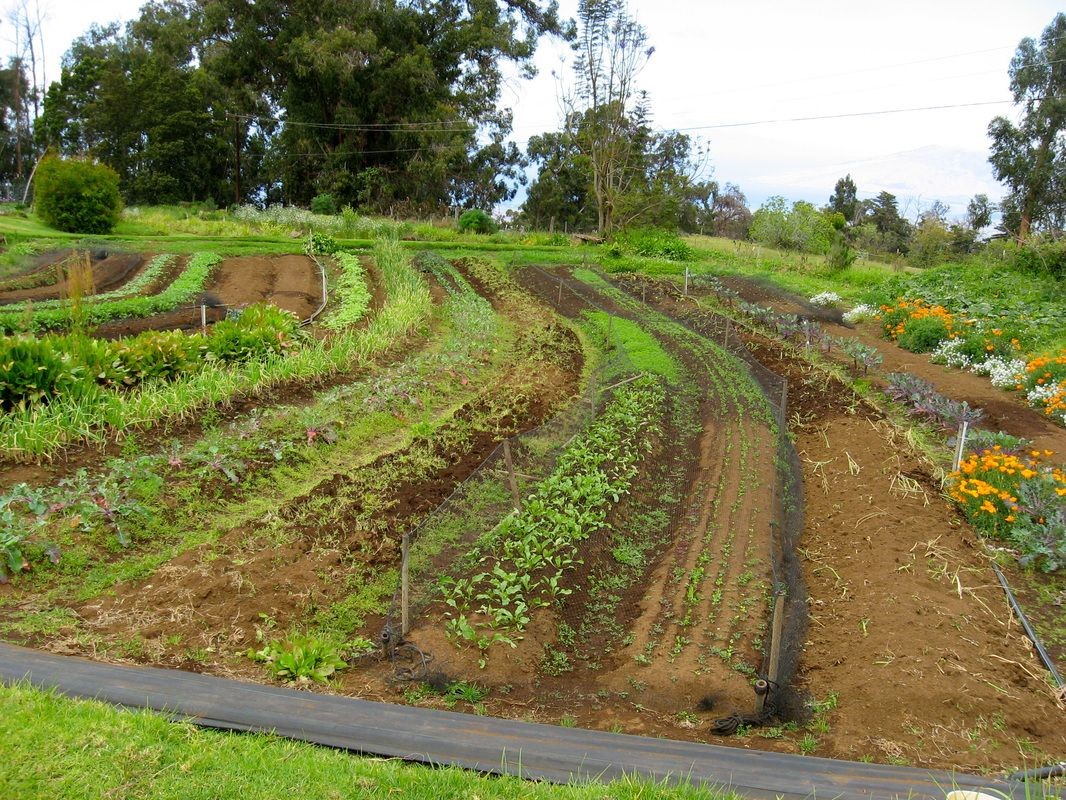
Figure 1. Contour Gardening
The practice has been proven to reduce fertilizer loss, power and time consumption, and wear on machines, as well as to increase crop yields and reduce erosion. Contour farming can help absorb the impact of heavy rains, which in straight-line planting often wash away topsoil. Contour farming is most effective when used in conjunction with such practices as strip cropping, terracing, and water diversion.
Decades of tillage and a lack of cover cropping have caused serious harm to the world’s hillside cropland and its soil structures, creating an urgent need to explore alternative cultivation methods, such as those used in contour farming.
2. Benefits of contour farming
2.1 Prevents soil erosion
Conventional farming practices that cultivate along straight, long, and even slopes that are parallel to the flow of water, accelerate the rate of erosion when it rains because all of the water flows straight downhill. This often results in the soil being “washed away” along with the crop. Farming across slopes perpendicular to the flow of water, in contrast, acts like a barrier, which aids in slowing down runoff water, allowing it to soak into the soil completely.
Contour farming can also reduce soil erosion by as much as 50% compared to farming up and down hills, according to the Natural Resources Conservation Service. The agency also notes that because contour farming reduces water runoff, it controls the number of twigs, pebbles, sand, and other debris, resulting in better water quality.
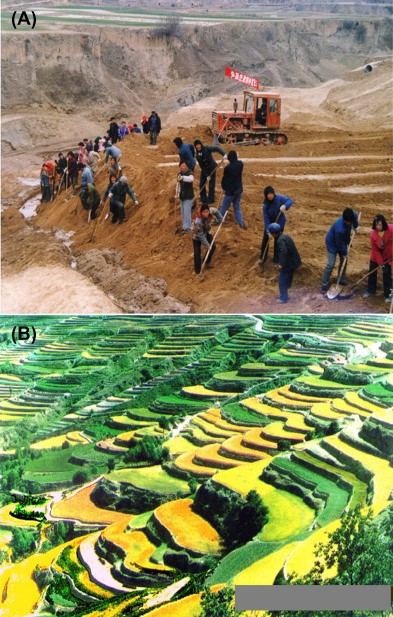
(Source: India Water Portal)
2.2 Improves water irrigation
Farmers can further help slow down the flow of water during rainy seasons, by digging a hillside ditch or swale across a slope. In addition to collecting excess soil moisture and allowing a more even distribution of irrigation or rainwater to the crops, “swales help sink additional water into the soil, so it can be used during dryer weather without needing to irrigate”.
In the contour lines both “true on contour” swales, which catch and hold water across the landscape, as well as slightly “off-contour” swales, which slowly move water from one location to another, while still allowing the water to sink in slowly. “These off-contour swales not only help increase soil moisture, but they also prevent excessive surface water that impedes equipment access to fields”
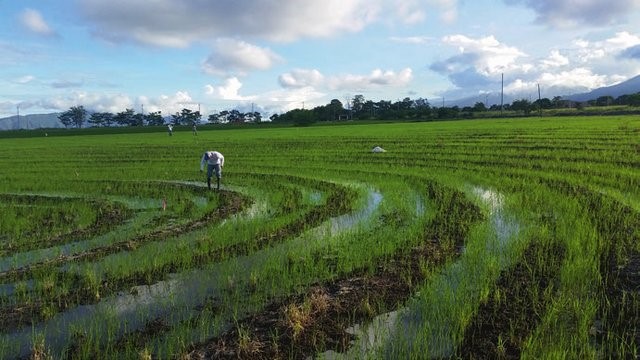
(Source: Wikipedia)
2.3 Boosts nutrients
The unsung hero of contour farming is increased soil fertility. “In a contoured design, a farmer can plant different crops on different strips, and alternate them depending on the nutritional needs of each type of crop”.
For example, legumes can be alternated with corn, so the corn can use nitrogen that the legumes leave in the soil. The increase in soil moisture from swales also promotes biological activity in the soil, which releases additional nutrients to plants.
2.4 Increases yield
Reducing runoff, soil erosion, and increasing fertility are all key benefits of contour farming, yet the practice has also shown increases in crop yields. In a recent study conducted by the Soil Conservation Service and the University of Nebraska, by retaining moisture and sharing nutrients in the soil, the majority of farmers surveyed reported a 5-10% increase in yields.
The study also found that when farmers used contour farming methods under ideal conditions, such as on slopes with gradients between 2% and 10% and precipitation rates under 6.5 inches per year, their yields increased by margins of up to 50%.
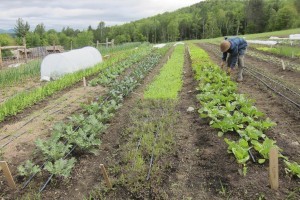
(Source: India Water Portal)
2.5 Considerations
Before the implementation of contour farming, some considerations should be considered
i. Increasing residue and roughness decrease overland flow velocities, thus increasing the maximum acceptable slope length. But increasing residue and roughness alone is not enough to produce this effect.
ii. Before designing and layout contour lines, obstruction removal and changes in field boundaries or shape should be considered.
iii. Where contour row curvature becomes too sharp to keep machinery aligned in rows during field operations, consider the establishment of sod turn strips on sharp ridge points or other odd areas as needed.
iv. When the intersection of crop rows with the field edge is not perpendicular, a field border (Anonymous, 2008) may be needed to allow farm implements room to turn.
v. If using residue and tillage management, ridge-till (Anonymous, 2008) on the contour, avoid crossing over ridged rows the effectiveness of the ridges. Sod turning strips may be established if correction areas are unavoidable.
3. Conditions where practice applies
Contour farming is most effective on slopes between 2 and 10 percent (Anonymous, 2008). This practice will be less effective in achieving the purposes on a slope exceeding 10 percent and a single storm erosion index greater than 140. In other conditions, the crop grown along contours must always be associated with other practices of conservation. The practice is not well suited to rolling topography having a high degree of slope irregularity because of the difficulty of meeting row grade criteria. Several factors influence the effectiveness of contour farming to reduce soil erosion. These factors included:
Row grade
Ridge height
Cover and roughness
Slope length
Slope steepness
Soil hydrologic group
The crop rows shall have enough grade to ensure that runoff does not pond and cause unacceptable crop damage. Soils with very slow infiltration rates (hydrologic groups C and D) will have a minimum absolute row grade of 0.2 percent on slopes where ponding could be a problem. The maximum grade of rows shall not exceed 2 percent or one-half of the up and downhill slope percent used for erosion prediction, whichever is less. Up to a 3 percent row grade is permitted within 150 feet of a stable outlet such as a grassed waterway, field border, or other stable outlet. The minimum ridge height shall be 2 inches during the period of the rotation that is most vulnerable to sheet and rill erosion prediction technology (Anonymous, 2008). The minimum ridge height criteria are not required when residue and tillage management, notill/strip till/direct seed (Anonymous, 2008) is used for the contour and at least 50 percent surface residue cover is present between the rows after planting.
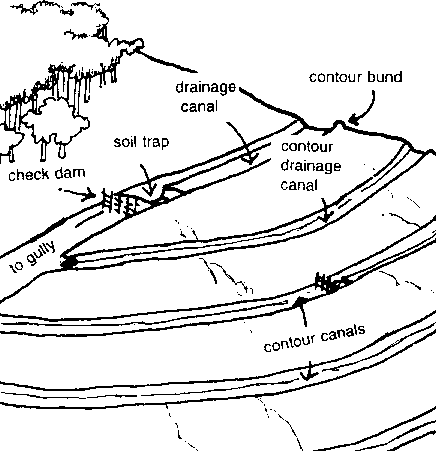
Figure 2. General Consideration of Contour Farming
4. Operation and maintenance
All tillage and planting operations perform parallel to the contour baseline. Farming operations should begin on the contour baseline and proceed both up and down the slope in a parallel pattern. Where field operations begin to converge between two non-parallel contour baselines, establish a correction area that is either permanently in sod, or in cover management. Where contour row curvature becomes too sharp to keep machinery aligned with rows during field operations, establish sod turn strips on sharp ridge points or other odd areas as needed. Maintenance needed for this practice includes protecting the permanent guide rows, periodic inspection and repairs to water outlets, and protecting up and downhill farm roads from erosion.
5. The main constraints of contour farming
Some of the main constraints to practicing contour farming are as follows
i. Overturning tractors and self-propelled vehicles, especially in wet conditions is one of the main constraints of contour farming.
ii. The trends in the agricultural sector are not conducive to soil conservation practices. With increasing off-farm employment of young people, its mostly ignores old farmers that stay behind in rural. Both trends decrease the likelihood of using contour cultivation.
iii. Difficulties in drawing contour lines and lack of knowledge about contour farming are other constraints.
Conclusion
The use of contour farming systems is one of the most important management approaches to reduce runoff and soil erosion on a mild slope. Results showed contour cultivation reduced the annual runoff by 10% compared with cultivation perpendicular to the slope. Also, cultivation and planting along contour lines in comparison with cultivation and planting downward the slope reduces soil losses and water losses by 49.5 and 32%, respectively. However, contour farming in conjunction with other conservation tillage such as no-tillage or minimum tillage is more effective. This practice can also improve crop yield through soil moisture retention in arid and semi-arid regions. Where the use of contour farming is limited based on the conditions, beetle banks or stone banks can be used at 1.5 to 2 m intervals on contour lines. Although these practices are not as proper as using contour farming across the field, these still can be useful for reducing runoff and soil erosion. These practices can also reduce difficulties of cultivation and spraying operations, which are limitations to using contour farming.
References
Safari, A., Asoudar, M. A., Ghasemi, M., Ghaseminejad, M., &EbdaliMashadi, A. (2013). Effect of residue management, different conservation tillage and seeding on soil physical properties and wheat grain yield. Journal of Sustainable Agriculture and Production Science, 23(2), 49-59.
Chambers, B. J., Garwood, T. W. D., & Unwin, R. J. (2000). Controlling soil water erosion and phosphorus losses from arable land in England and Wales. Journal of Environmental Quality, 29(1), 145-150.